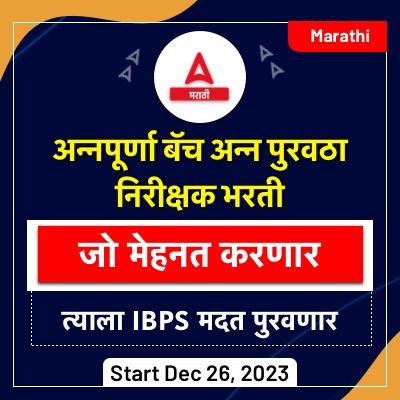For India to become ‘developed’ by 2047
(Indian Express, 01/06/24)
The goal is for India to become a developed country by 2047, when it completes 100 years of independence.
What growth rate is required to achieve the developed country status?
- A developed country is currently classified as having a per capita income of $13,845 or more.
- India’s current per capita income is $2,500 (as of April 2024).
- To achieve the developed country status, India needs an average annual real growth rate of 6-7%, assuming an incremental capital output ratio (ICOR) of 5.
What is the suggested strategy for India’s development?
- Boost Investment: Increase real Gross Fixed Capital Formation (GFCF) to 35% of GDP, requiring a surge in private investment (1-2% of GDP) as high fiscal deficits limit government spending.
- Broad-based Growth Strategy: Move beyond just service exports. Focus on manufacturing, agriculture, sunrise industries (e.g., food processing), and efficient import substitution (“Atmanirbhar Bharat”).
- Embrace New Technologies along with job creation: Skill development is crucial to adapt to AI, machine learning, etc. Develop a mix of sectors to ensure job growth alongside economic growth, as technological advancements may significantly impact labor absorption.
- Balance Growth with Equity:
- Prioritize poverty reduction (extreme poverty below 3% achieved).
- Invest in social safety nets (subsidized food grains).
- Address income inequality through investments in health and education (both quantity and quality).
- Navigating the Global Trade Landscape: The rising tide of protectionism necessitates a strategic approach to international trade. India needs to identify and capitalize on emerging opportunities while safeguarding its domestic interests
- Sustainable Development Practices: Achieving economic growth must be harmonized with environmental protection and responsible resource management. Integrating sustainable practices into the development strategy is crucial for long-term success.
Can you answer the following question?
India aspires to become a developed nation by 2047. Critically examine the challenges and opportunities that lie ahead in achieving this goal.
Hint:
Challenges: Discuss issues like high fiscal deficits, limited private investment, the need for a diversified economy, job creation in a technology-driven world, and ensuring inclusive growth (reducing poverty and inequality). Briefly mention the changing global trade environment.
Opportunities: Highlight India’s demographic dividend, potential in sunrise industries, focus on skill development, and scope for technological advancement. Briefly touch upon the importance of sustainable development practices
Heat Wave and the Worker
(Indian Express, 01/06/24)
As northern India faces an intense heat wave (Delhi’s temperatures surpassing 50o Celsius), the most vulnerable are the workers, especially those engaged in hard physical labour.
- Existing Heat Action Plans (HAPs) in India aim to predict and issue timely warnings about heatwave events. This allows people to take precautions and reduce health risks.
- This also involves educating the public about heatstroke symptoms, preventive measures, and available resources is a crucial element.
What are the gaps in Existing Heat Action Plans (HAPs)?
- Limited coverage: Although the National Disaster Management Authority (NDMA) mandates the drafting of HAPs at city, district, and state levels, many regions still lack comprehensive plans. This creates an uneven level of preparedness across the country.
- Data scarcity: Up-to-date data on vulnerable populations, local weather patterns, and healthcare infrastructure gaps is often lacking. This hinders effective planning and resource allocation.
- Weak implementation: Even in places with HAPs, implementation is often inadequate due to insufficient funding, lack of trained personnel, and poor coordination.
- Focus on crisis response: Most plans prioritize immediate response measures during heatwaves, neglecting long-term strategies for heat mitigation. There is a need for HAPs to integrate with broader urban planning and climate action plans to ensure sustainable and resilient solutions.
- Inadequate focus on vulnerable groups: Tailored interventions for outdoor workers, children, and the elderly are often missing. Existing plans may not adequately address the specific needs of these populations.
- Limited focus on urban planning: Strategies to address the urban heat island effect, such as promoting green spaces and cool roof technologies, are often absent.
- Absence of Worker Participation: Informal workers, who are most affected by heat waves, often have valuable insights and practical knowledge about their working conditions and the specific challenges they face. Their exclusion from the planning process results in measures that may not be practical or effective.
What are the Policy Recommendations to Mitigate the Impact of Heat Waves?
- Reconceptualize Heatwaves: Treat them as long-term disasters, integrate Heat Action Plans (HAPs) with urban planning and climate action. Collaboration between NDMA, MoHUA, and MoLE is crucial.
- Economic & Health Protection: Include income protection (lost wages), affordable healthcare, and strengthened social safety nets in HAPs to address the economic and health burden on informal workers.
- Urban Redesign: Prioritize informal workers’ needs by ensuring access to water, shade, and rest areas in public spaces. Invest in green spaces, improved housing, and better public transportation to mitigate heat impacts
- Worker Participation: Include worker communities (street vendors etc.) in drafting and implementing HAPs through existing welfare boards and committees.
- Gender Equity: Address the specific needs of women workers (informal sector, caregiving responsibilities) through gender-sensitive measures in HAPs.
- Evolving Labor Laws: Integrate climate change considerations into labor reforms, extend legal protections (safe work, fair wages) to informal workers.
Can you answer the following question?
Heatwaves pose a growing threat to India, particularly impacting vulnerable populations and informal workers. Critically examine the limitations of existing Heat Action Plans (HAPs) in India. Suggest a multi-pronged policy approach to make HAPs more effective.
महाराष्ट्रातील सर्व स्पर्धा परीक्षांसाठी ऑनलाईन क्लास, व्हिडिओ कोर्स, टेस्ट सिरीज, पुस्तके आणि इतर अभ्यास साहित्य खाली दिलेल्या लिंक वर क्लिक करून मिळवा.
अड्डा 247 मराठीचे युट्युब चॅनल
अड्डा 247 मराठी अँप | अड्डा 247 मराठी टेलिग्राम ग्रुप










